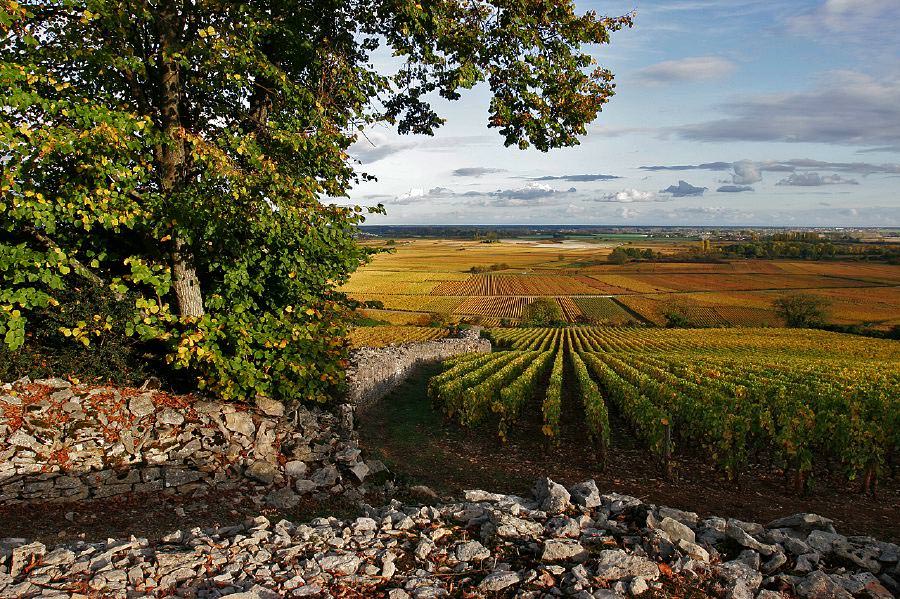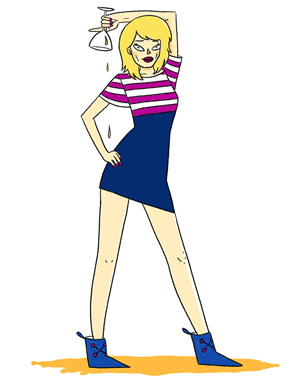
Photo: J Chevaldonne
The Burgundians are terroirists…no need to exit the building.. just a passion for wine which reveals its origin; that unique mixture of limestone and clay; the light which falls on the vines as they curve around a hill; the way the sun rises swift and warming over a vineyard or sets lingeringly…all very poetic you may scoff, but I kid you not, you can taste such things as subtle nuances in the wine.
Burgundy is not really about grapes at all, but the land on which they’re grown…sucked through the roots. That’s what makes the wines special and these days the land is lovingly looked after – growers have even gone back to using a horse drawn plough, so as not to compact the soil. This soil is tunnelled through and aerated by the earth worm, which was an endangered species in the era of insecticides, but has celebrity status these days. You can taste the ground, not just in grand expensive wine, but in affordable regional wines as well. You’ll have to follow me to find these…
If you’ve ever visited the vineyards in America or Australasia, some sprawling across hundreds of acres, you may be surprised how small Burgundy vines are and how compact; dwarf vines nestling just a meter apart. This creates competition for nutrients sending the roots down to tap the mineral of mother rock. On the Côte d’Or, the limestone is full of fossilised crustaceans which give a minerality to the wines..a stony, saline character. A Burgundian vine should be like a lean, toned athlete to express a special sense of place… which maybe a vineyard of 4 or 5 hectares. It needs just enough sun and nutrients – too much and you have sunshine in the glass, perfectly pleasant, but without the finesse.
The canny 9th century monks of Cluny, who were fond of a glass or two, observed the places where vines produced the best wines. They translated terroir as inclination… the aspect and the wind play their part…but so has man in observing, defining and ultimately delimiting and naming the places to grow specific vines over the centuries. One the one hand terroir is a tangible thing – the natural conditions – while on the other it is story which continues to unfold.
The best way to get to grips with terroir is in the vineyard, so I had a root around. After a tasting with Christophe Roumier in Chambolle-Musigny, he obligingly gave an ‘off the cuff’ interpretation of terroir in the following film. He has vines in some of the finest places on the planet to make red wine; for example Chambolle-Muisgny, Premier Cru, Les Amoureuses and the grand crus of Bonnes-Mares and Musigny. However even more modest vineyards – including Bourgogne – can have a strong sense of place.
Here’s an example or two of terroir expressed in the glass; take Pinot Noir grown on clay, the wine will be soft and rounded. A wine that says ‘come hither,’ while Pinot Noir on grown limestone soil is strict, clipped and fresher… and far more ‘stand offish.’ The slope makes a difference too; an aspect facing more northward, or a place further up the slope on thinner top soil will make a wine racier and leaner.
Chardonnay is a promiscuous variety, happy to frolic anywhere in the world, but also capable of the greatest finesse – think Montrachet. In Burgundy Chardonnay is not just a ‘blonde’ varietal wine, togged up in oak, but a conduit to the terroir…from the salty wines of Chablis down to the richer, more softly stony wines of the Mâconnais. (Fyi – there are varieties other than Pinot Noir for red and Chardonnay for white, but they have bit parts in this story).
The terroir of Burgundy has recently been inscribed on the UNESCO World Heritage list. The wine which expresses this terroir has traditionally captured the imagination of wine lovers, but is now grabbing the attention of wine investors and trophy hunters – particularly the Grand Cru. The next blog will consider how this terroir is divvied up – from regional wines to Grand Cru – and what gives the latter its ‘wow’ factor.
Christophe Roumier speaking in the vineyard at Domaine Georges et Christophe Roumier in Chambolle Musigny

